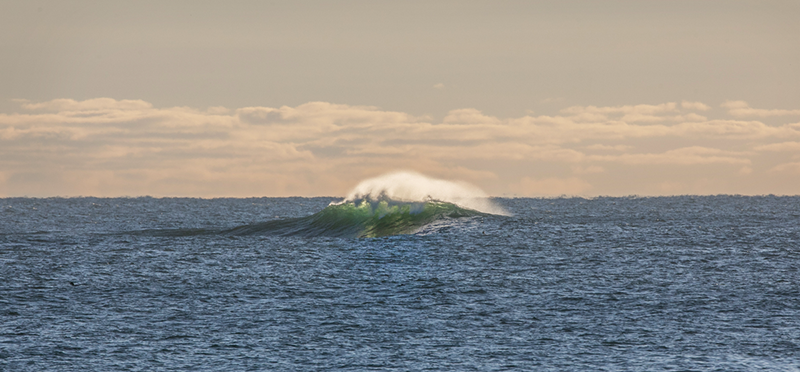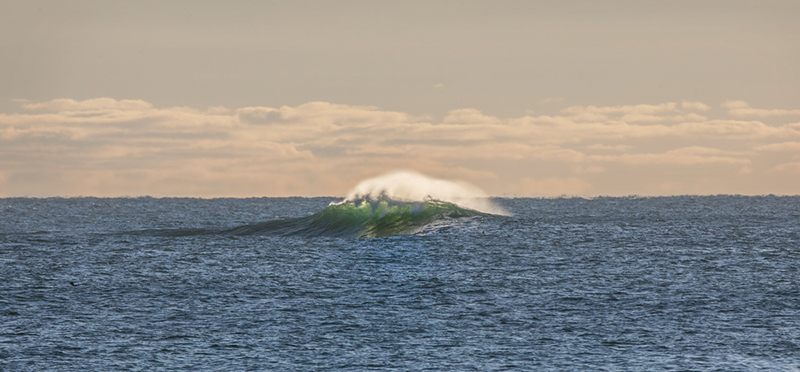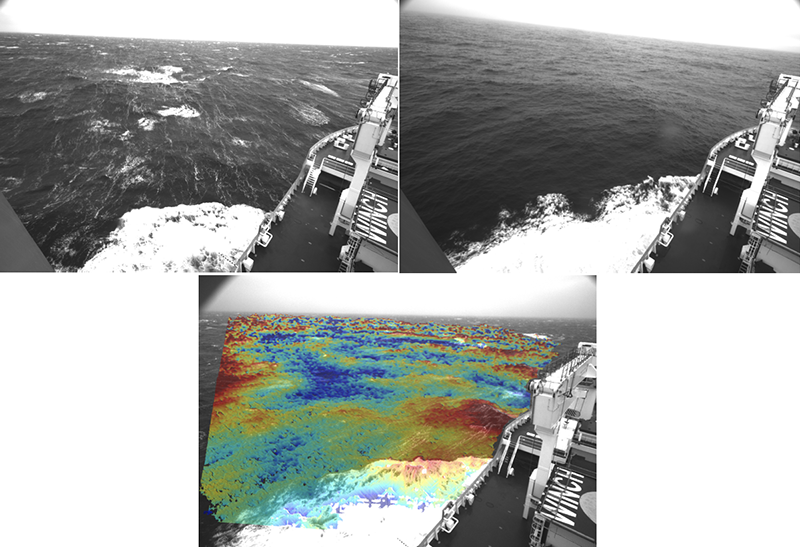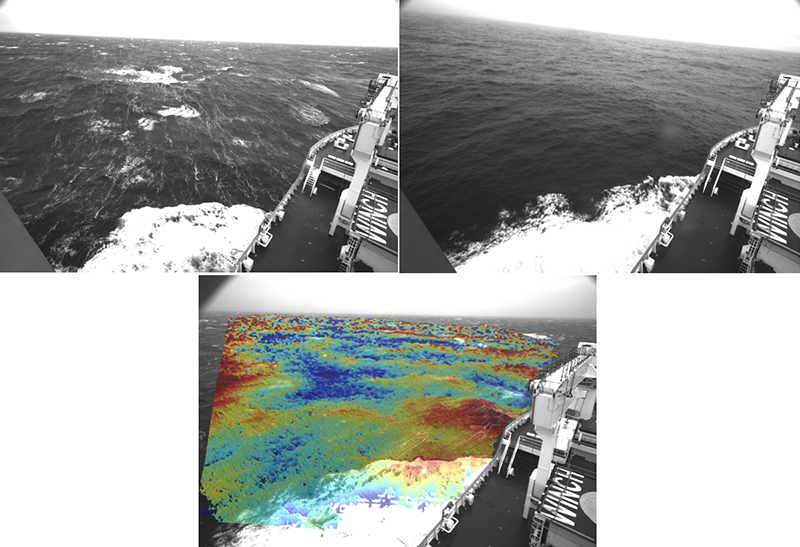Ocean Measurements Detect Conditions for Giant Waves
Researchers still disagree on what causes rare and large “rogue waves,” which can damage ships, lighthouses, and other structures. Now, using combined measurements of wave heights and wind speed in an oceanic region known for its rough seas, a research team has demonstrated that wind can produce the wave conditions expected to lead to rogue waves [1]. Previously, this idea was demonstrated only in laboratory experiments. The researchers hope this new understanding will contribute to the development of methods for predicting this dangerous phenomenon.
There is no consensus on what causes rogue waves in the ocean, says Alessandro Toffoli, an expert in infrastructure engineering at the University of Melbourne, Australia. One prominent view is that oceanic rogue waves occur purely through a statistical effect: although waves typically follow a “normal,” or Gaussian, distribution, with heights strongly clustering around an average, a fortuitous convergence of many such waves can occasionally produce a very large wave.
In contrast, laboratory experiments and theoretical models suggest that, under the right conditions, nonlinear ocean dynamics can amplify waves, making the distribution of wave heights depart from a Gaussian. The distribution can spread out, giving large waves higher probabilities than in a Gaussian distribution. Unfortunately, says Toffoli, no study has yet observed such increased numbers of larger waves in the ocean. “So this idea has mostly been dismissed as unrealistic,” he says. “Are there rogue sea states where rogue waves thrive? The answer to this remains elusive.”
To look for such states, Toffoli and colleagues undertook an expedition in the Southern Ocean, a region around Antarctica known for strong winds and large waves. The team made measurements from a South African icebreaker in the austral winter, in June and July 2017. During the voyage, the researchers used a stereo pair of cameras to map the water surface height and measure the statistical characteristics of the waves viewed off one side of the ship. Alongside these measurements, they collected data on local atmospheric conditions, including wind speed.
Toffoli says that the wind data allowed the team to study how wave characteristics change as waves are driven by the wind. Assuming a relatively steady wind, waves start out moving slowly with shorter wavelengths and gradually move faster as their wavelengths increase. So the team could use the ratio of the wave speed to the wind speed as a proxy for wave age. As the team’s analysis showed, younger waves behave very differently than older waves.
In seas with relatively young waves, the wave heights were about 3.5–4.5 m, and they were particularly steep, meaning they had a high ratio of height to wavelength. Seas in this young stage—with waves moving at about half the wind speed and deriving energy from it—also showed frequent white caps, caused by steep waves breaking. In contrast, seas with older waves—their speeds now as high as the prevailing wind or even higher—were about 2–3 m high, less steep, and lacked white caps.
The team estimated the kurtosis, a statistical measure of the wave size distribution’s departure from a Gaussian. The higher the kurtosis, the more likely are extra-large waves, including rogue waves. In the wind-driven young seas, with slow, strongly driven waves, the researchers found a kurtosis of 3.4, well above the 3.0 value characteristic of seas with a Gaussian distribution of waves. In older seas, the distribution returned to a Gaussian. This observation suggests that the action of strong winds during early stages of wave growth can stir nonlinear ocean dynamics, leading to a strongly non-Gaussian distribution of waves and more frequent rogue waves.
“Until now,” says Toffoli, “this has only been observed in controlled laboratory experiments where waves were mechanically generated.” In future work, Toffoli and colleagues hope to characterize rogue seas more accurately. “We need to acquire more data to consolidate our finding,” he says. The team also aims to clarify the physical mechanisms behind rogue waves with the eventual goal of developing ways to forecast their occurrence.
“This is an important contribution to physics and engineering science,” says Amin Chabchoub, a physical oceanographer and expert on extreme waves at the University of Kyoto, Japan. “The key contribution is to provide evidence for a mechanism operating in the Southern Ocean that increases the frequency of extreme wave events in the presence of wind.” He expects the results to lead to improved shipbuilding standards and to help in the prediction of rogue waves.
–Mark Buchanan
Mark Buchanan is a freelance science writer who splits his time between Abergavenny, UK, and Notre Dame de Courson, France.
References
- A. Toffoli et al., “Observations of rogue seas in the Southern Ocean,” Phys. Rev. Lett. 132, 154101 (2024).
More Information
Focus: Making Rogue Waves with Wind and Water (describes earlier work by Toffoli et al.)
Viewpoint: A Unifying Framework for Describing Rogue Waves (co-written by Chabchoub)







